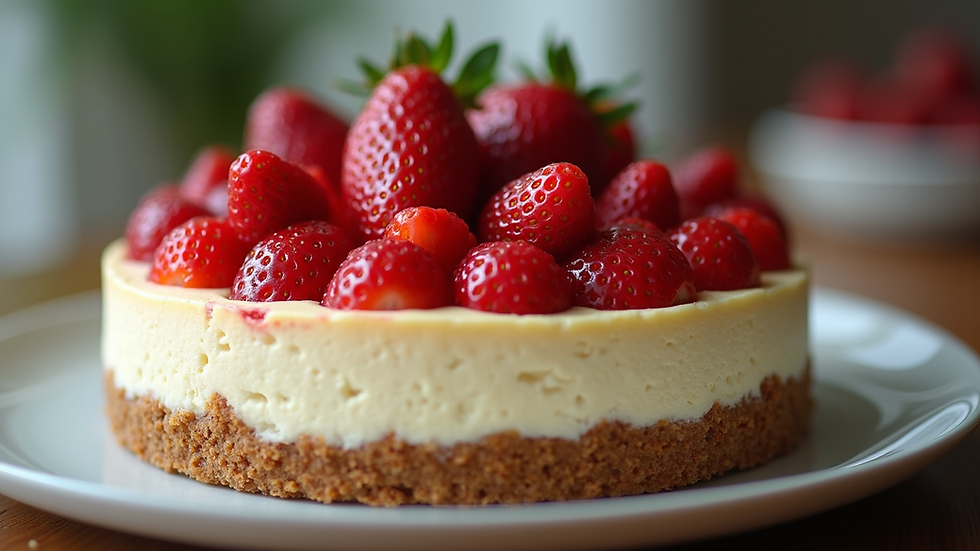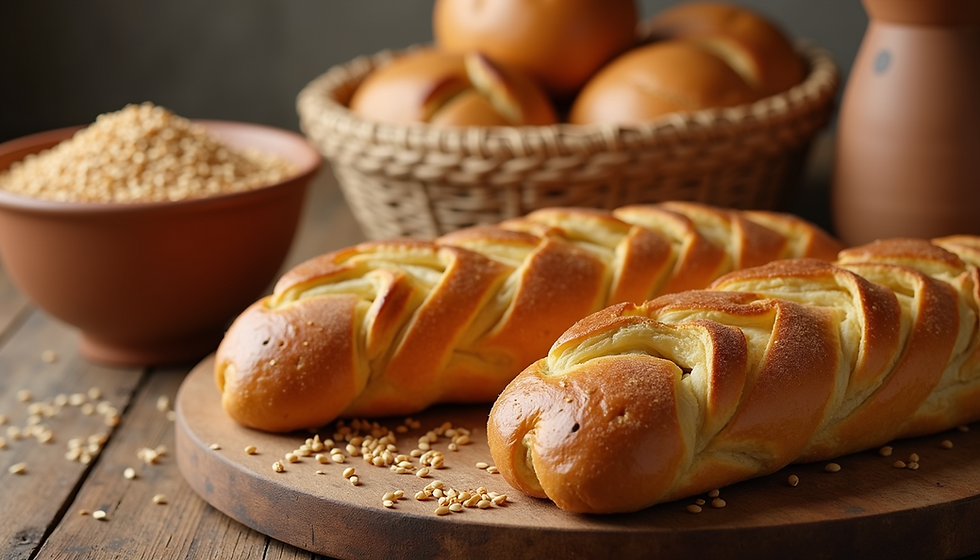Unveiling the Secrets: Best Practices Every Cheesecake Lover Should Know
- Denisa Carina Chiru
- Jun 3
- 4 min read
Cheesecake enthusiasts, this is for you! Whether you bake regularly or simply enjoy eating cheesecake, there is always something new to learn about this creamy delight. With its unique blend of flavors and textures, cheesecake can be both fun to make and satisfying to eat. Let's explore best practices that will elevate your cheesecake baking skills and impress anyone lucky enough to taste your creations.
Understanding Cheesecake Basics
Before you bake your first cheesecake, it's important to grasp the basics of this beloved dessert.
Cheesecakes come in two main styles: baked and no-bake. Baked cheesecakes, cooked in the oven, have a dense and creamy texture. On the other hand, no-bake cheesecakes set in the refrigerator, resulting in a lighter, fluffier dessert. Both styles are delicious, so try your hand at making both to discover your favorite!
Choosing the Right Ingredients
Using high-quality ingredients is crucial for the best cheesecake.
Cream Cheese Selection
Cream cheese is a key ingredient, so opt for full-fat cream cheese to ensure optimal richness. Some popular brands like Philadelphia and mascarpone offer different flavors and textures. You may find that different brands yield different results. For example, a noted review indicated that using Philadelphia brand cream cheese is preferred by 75% of bakers for its smooth consistency.
Freshness Matters
Always prioritize freshness. Fresh eggs, pure vanilla extract, and fresh citrus zest enhance the flavor significantly. By using fresh ingredients, your cheesecake can have a depth of flavor that frozen or older items simply can't match.
The Crust: A Solid Foundation
A fantastic cheesecake needs an equally fantastic crust.
Graham Cracker vs. Other Options
While a classic graham cracker crust is a staple, don't hesitate to explore alternatives. Crushed Oreos, for instance, can add a rich chocolate flavor. Nut-based crusts, like those made from almond flour, are perfect for gluten-free options and bring a unique crunch.
Perfect Crust Preparation
Press your chosen crust mix firmly and evenly into the bottom of your pan. Baking it for about 10 minutes helps it set and prevents a soggy base. This small step can make a big difference in the final product.
Baking Technique
For baked cheesecakes, mastering the baking technique is vital.
Water Bath Baking
Using a water bath (bain-marie) helps maintain even baking temperatures, which minimizes the chance of cracks forming on the surface. To do this, wrap your springform pan in aluminum foil to keep it watertight, then place it in a larger pan filled with hot water before baking. This method helps create a smooth, flawless top.
Know When It’s Done
To check for doneness, gentle shake the pan. You want a slight wobble in the center, indicating a creamy texture. It will firm up as it cools, so avoid overbaking.
Cooling and Setting
Proper cooling is essential for achieving the perfect cheesecake.
Cooling Outside the Oven
After baking, leave your cheesecake in the oven with the door slightly ajar for about 60 minutes. This gradual cooling process prevents cracks caused by sudden temperature fluctuations.
Refrigeration
Once the cheesecake has cooled at room temperature, transfer it to the fridge. Allow it to set for at least four hours, preferably overnight. This resting period allows flavors to develop and enhances the overall taste.
Flavor Enhancements
Consider expanding beyond vanilla flavoring.
Infusions and Swirls
You can infuse flavors like lemon or almond right into the batter. Adding fruit purees or chocolate swirls not only looks beautiful but also adds layers of flavor.
Toppings Galore
Toppings can elevate your cheesecake. Fresh strawberries, a glossy chocolate ganache, or homemade berry compote not only enhance presentation but also contribute to a delightful flavor profile. A survey of dessert lovers revealed that 65% prefer cheesecakes topped with fresh fruit for that perfect balance of sweetness and tartness.
Serving Tips
How you present your cheesecake can greatly impact the overall experience.
The Right Slice
For neat slices, use a hot knife. Dip your knife in hot water, wipe it dry, and cut—this ensures clean edges that will impress your guests.
Presentation Matters
Think about garnishing with fresh mint leaves or a light sprinkle of powdered sugar for that extra touch. A well-presented cheesecake can become the centerpiece of any gathering.
Storing and Freezing
Proper storage is essential for maintaining your cheesecake's quality.
Refrigeration
You can keep cheesecakes in the refrigerator for up to five days. Make sure they are covered to prevent drying or absorbing unwanted odors.
Freezing
If you want to store your cheesecake longer, consider freezing it. Wrap tightly in plastic wrap and then aluminum foil. This method will keep it fresh for up to three months. When ready to enjoy, thaw it in the refrigerator overnight for the best results.

Final Thoughts
These best practices will guide both beginners and experienced bakers in creating the cheesecake of their dreams. The secret lies in quality ingredients, precise techniques, and a spirit of experimentation.
With a bit of patience and a splash of creativity, you will unveil your cheesecake-making potential. So gather your ingredients and enjoy every delicious bite of your homemade cheesecake masterpieces! Happy baking!



Comments